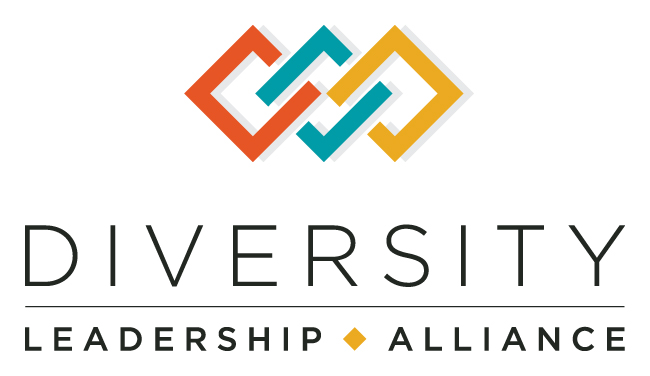Introduction
Diversity training is a structured program designed to help employees understand and appreciate the differences among their colleagues. It aims to foster an inclusive work environment where everyone feels valued and respected. The importance of diversity training in the workplace cannot be overstated. It helps in breaking down cultural barriers, reducing prejudices, and promoting teamwork.
Effective diversity training programs offer a multitude of benefits:
- Improved Employee Engagement: Employees who feel understood and respected are more likely to be engaged and committed to their work.
- Retention: Inclusive workplaces have lower turnover rates as employees feel a sense of belonging.
- Creativity: Diverse teams bring varied perspectives, leading to innovative solutions and ideas.
To further enrich your understanding of this topic, consider gaining insights from thought leaders such as Dr. Olga I Davis who explores the impact of race and racism, as well as Jacque Starks who provides valuable perspectives on diversity initiatives.
The purpose of this article is to equip you with 7 practical and effective strategies for conducting successful diversity training sessions. Implementing these strategies can help your organization build a more inclusive culture, enhance employee satisfaction, and drive business success.
1. Understanding Diversity Training
Diversity training is an educational program designed to increase participants’ cultural awareness, knowledge, and skills to foster an inclusive work environment. It aims to promote understanding and respect for diverse backgrounds, perspectives, and experiences among employees. In the context of workplace diversity, these programs help break down prejudices and encourage behaviors that contribute to a more harmonious and collaborative working environment.
Role in Fostering an Inclusive Work Environment
Diversity training plays a pivotal role in fostering an inclusive work environment by:
- Raising Awareness: Educating employees about different cultures, identities, and experiences.
- Encouraging Respect: Promoting mutual respect and understanding among colleagues.
- Improving Communication: Enhancing interpersonal communication across diverse groups.
- Reducing Bias: Addressing unconscious biases that may impact decision-making and behavior.
Relationship Between Diversity Training, DEI Initiatives, and Workforce Diversity
The relationship between diversity training, DEI (Diversity, Equity, and Inclusion) initiatives, and workforce diversity is intertwined:
- Diversity Training as a Foundation: Effective diversity training serves as the foundation for broader DEI efforts within an organization. It equips employees with the knowledge they need to engage in DEI initiatives meaningfully.
- Alignment with DEI Goals: Diversity training aligns with organizational goals related to diversity, equity, and inclusion by addressing both individual attitudes and systemic issues.
- Enhancing Workforce Diversity: By fostering an inclusive culture, diversity training helps attract and retain a diverse talent pool. This enhances overall workforce diversity and drives innovation.
Importance of Comprehensive Understanding Before Conducting Training Programs
Before conducting diversity training programs, organizations must have a comprehensive understanding of diversity issues:
- Assessing Current Climate: Conduct surveys or focus groups to gauge the current state of diversity within the organization.
- Identifying Key Areas for Improvement: Use data-driven insights to identify specific areas where improvement is needed.
- Engaging Stakeholders: Involve key stakeholders from diverse backgrounds in the planning process to ensure the training is relevant and effective.
To gain more insight into how leaders can transform culture through diversity training strategies, you might find valuable resources on the Diversity Leadership Alliance website. The website provides a wealth of information on fostering inclusive work environments, including articles like Hero Internal 1, which sheds light on successful diversity initiatives within organizations. Additionally, if you’re interested in contributing to the cause, you can also explore opportunities to donate to further support their efforts.
Understanding these elements ensures that your organization’s diversity training efforts are not just well-intentioned but also impactful and sustainable.
2. Creating a Culturally Responsive Training Curriculum
Cultural competence is essential in diversity training. It refers to the ability to understand, communicate with, and effectively interact with people across cultures. This competence helps break down barriers, fosters mutual respect, and enhances collaboration among employees from different backgrounds.
Tips for Developing Inclusive Training Materials
- Use Diverse Examples: Ensure your training materials include examples from a variety of cultural contexts. This approach validates the experiences of all employees and enriches the learning experience.
- Avoid Stereotypes: Stereotypical representations can perpetuate bias and alienate participants. Focus on real-world scenarios and humanize every cultural narrative included in your curriculum.
- Representation Matters: Include voices and perspectives from multiple cultures when designing your training materials. This not only broadens understanding but also promotes an inclusive environment.
Advocating for a Multicultural Approach
A multicultural approach ensures that your curriculum represents various cultures and perspectives. This method acknowledges the richness brought by diverse backgrounds and encourages a more profound appreciation for global viewpoints.
- Incorporate Global Case Studies: Use case studies from different parts of the world to highlight how diversity issues manifest globally.
- Invite Diverse Speakers: Bringing in speakers from various cultural backgrounds can provide firsthand insights and experiences that resonate more deeply with participants.
To see how some organizations effectively integrate these elements, you may want to explore resources like PerkinsCoie, which showcases successful implementation at their conference. Additionally, you can check out practical applications of innovative models in Global Inclusion, which provides valuable insights into creating an inclusive environment.
Developing a culturally responsive training curriculum isn’t just about content; it’s about creating an environment where every participant feels seen, heard, and valued. This approach lays the groundwork for a genuinely inclusive workplace where diversity is not just acknowledged but celebrated.
For further guidance, you can also consider reaching out to workshop moderators who specialize in this area and can offer personalized advice based on your specific needs.
3. Fostering Dialogue and Building Empathy Through Interactive Exercises
Incorporating interactive training activities in diversity workshops plays a crucial role in facilitating open dialogue among participants. By engaging employees through hands-on exercises, the training environment becomes more dynamic and effective. These activities help break down barriers, allowing for more candid conversations and deeper understanding.
Why Interactive Exercises Matter
Specific activities like role-playing or scenario analysis can be particularly effective. For instance:
- Role-Playing: Participants take on different roles to understand various perspectives within a given scenario. This helps in developing empathy and recognizing unconscious biases.
- Scenario Analysis: Teams analyze real-world situations that involve diversity-related challenges. This encourages critical thinking and collective problem-solving.
Interactive exercises also allow participants to practice perspective-taking, which is essential for fostering empathy. By stepping into someone else’s shoes, employees can better appreciate the experiences and challenges faced by their colleagues from diverse backgrounds.
Addressing Difficult Conversations
Addressing difficult conversations and conflicts that may arise during the training process is another key aspect. Creating a safe space where participants feel comfortable sharing their thoughts and feelings is vital for productive discussions. Facilitators should be well-equipped to manage these conversations, guiding them in a way that respects all viewpoints while steering towards constructive outcomes.
The Impact of Interactive Exercises
The importance of these exercises cannot be overstated. They not only make the training sessions more engaging but also build lasting connections among team members, promoting a more inclusive workplace culture.
“Interactive exercises are like bridges that connect individuals from different backgrounds, allowing them to walk towards understanding and acceptance.” – Diversity Trainer
Additional Resources
For additional resources or examples of successful workshops, explore Diversity Leadership Alliance Workshops or learn how organizations like USAA are implementing these strategies via Diversity Leadership Alliance USAA Initiatives.
Incorporating these interactive methods ensures a more comprehensive and impactful diversity training program, laying the foundation for ongoing dialogue and continuous improvement within your organization.
To further support your organization’s diversity efforts, consider leveraging the resources and support provided by the Diversity Leadership Alliance.
4. Leveraging Technology for Scalable and Inclusive Training Delivery
The use of e-learning modules and virtual diversity training can completely change how organizations deliver diversity training to a large number of people. These technological solutions have the potential to reach a wider audience, including remote employees, thus ensuring that everyone receives consistent and high-quality training regardless of their location.
Advantages of Technology in Diversity Training
- Scalability: E-learning modules and virtual reality (VR) platforms can be accessed by numerous employees simultaneously, making it feasible to train large groups without logistical challenges.
- Consistency: Standardized online courses ensure that all participants receive the same information, reducing the risk of inconsistencies that might occur in traditional in-person sessions.
- Flexibility: Employees can complete e-learning modules at their own pace, allowing them to fit training into their schedules more conveniently.
Ensuring Accessibility and Inclusivity
When selecting technological platforms or tools for diversity training, it’s crucial to prioritize accessibility and inclusivity. This means choosing platforms that are:
- User-friendly: Interfaces should be intuitive and easy to navigate for users with varying levels of tech-savviness.
- Accessible: Platforms must comply with accessibility standards such as WCAG (Web Content Accessibility Guidelines), ensuring that individuals with disabilities can fully participate.
- Culturally Sensitive: Training materials should avoid stereotypes and include diverse examples to resonate with a broad audience.
Blending Online and In-person Training Methods
A hybrid approach combining online and in-person methods often proves most effective. Here are some strategies:
- Pre-training Modules: Use e-learning modules to provide foundational knowledge before conducting interactive in-person sessions.
- Virtual Reality Exercises: Incorporate VR scenarios that allow employees to experience different perspectives in a controlled environment.
- Live Webinars: Host live webinars featuring expert speakers like Dr. Veenod Chulani, who can facilitate real-time Q&A sessions.
For those looking to implement these strategies, resources and guidance are available through organizations like the Diversity Leadership Alliance. Additionally, supporting such initiatives through donations can help expand their reach.
By leveraging technology effectively, you can ensure your diversity training programs are both scalable and inclusive, providing all employees with the opportunity to engage meaningfully with the content.
5. The Role of Leadership in Driving Diversity and Inclusion Through Training
Leadership plays a crucial role in creating an inclusive work environment. Getting support from top executives is the first step towards successful diversity training. When leaders actively take part in these sessions, it sends a strong message that diversity and inclusion are top priorities for the organization.
Key Steps for Leadership Involvement
- Executive Buy-In
-
- Showing commitment from the top can help to get everyone in the organization on board.
- Leaders should publicly support diversity initiatives and make sure they are integrated into the company’s values and goals.
- Management Participation
-
- Managers should not only attend but also actively participate in diversity training sessions.
- Their involvement helps to demonstrate desired behaviors and emphasize the importance of these initiatives to their teams.
- Accountability Measures
- Setting clear goals related to diversity and inclusion can bring focus and measurable results.
- Performance evaluations and goal-setting can be used as tools to hold managers responsible for making progress in these areas.
Addressing Leadership Resistance
Resistance or doubt from leadership can undermine diversity training efforts. Here are strategies to handle these challenges:
- Education and Awareness: Conduct targeted sessions for leaders to educate them on the business reasons for diversity, equity, and inclusion (DEI). This can help change their mindset by showing the concrete benefits of having diverse teams, such as increased innovation and better decision-making.
- Data-Driven Approaches: Present data that shows inequalities within the organization. Use metrics to demonstrate where improvements are necessary and how effective diversity practices can lead to tangible business results.
- Incentivize Participation: Connect involvement in diversity initiatives with incentives like bonuses or opportunities for career growth. This can motivate hesitant leaders to fully engage.
For those seeking more information on cultural intelligence and its impact on leadership roles, explore Are You Culturally Intelligent?. This resource offers valuable insights into how cultural intelligence can improve leadership effectiveness.
Effective leadership is essential in making DEI principles a part of an organization’s core. By taking proactive measures, leaders can create a more inclusive culture that benefits everyone.
To see real-world examples of organizations that have successfully implemented these strategies, visit Copperstate. These success stories can inspire and provide practical guidance for implementing diversity and inclusion initiatives.
Involve leaders at all levels, ensuring they understand their role in driving these important initiatives forward. For additional resources on implicit biases, check out Colorblindwh. These resources offer valuable insights into understanding and addressing implicit biases within the workplace, which is crucial for creating a truly inclusive environment.
6. Sustaining Momentum Through Continuous Learning and Supportive Policies
Organizations need to see diversity training as a long-term process. One-off workshops might spark initial awareness, but without ongoing education, the impact will likely fade. Continuous learning opportunities are vital for embedding diversity principles into the organizational culture.
Why Continuous Learning Matters
- Workshops and Seminars: Regularly scheduled sessions keep diversity topics at the forefront.
- Online Modules: E-learning platforms can provide flexible, on-demand training options.
- Guest Speakers and Panels: Industry experts can offer fresh perspectives and deeper insights into diversity issues.
Connecting with Other Diversity Efforts
Diversity training should not stand alone. It ties closely with other initiatives such as:
- Employee Resource Groups (ERGs): These groups provide a supportive space for underrepresented employees and can reinforce lessons from formal training.
- Mentoring Programs: Pairing employees from different backgrounds can foster mutual understanding and professional growth.
For example, Diversity Leadership Alliance frequently highlights successful partnerships that blend these initiatives seamlessly. Their conferences showcase inspiring stories of collaboration and innovation in promoting diversity.
Aligning HR Policies with Diversity Principles
HR policies must reflect the principles covered in diversity training to ensure consistency and credibility. Key areas include:
- Inclusive Hiring Practices:
-
- Implement blind recruitment processes to minimize biases.
- Ensure job descriptions are free from gendered language or cultural biases.
- Performance Evaluations:
-
- Incorporate diversity goals into performance metrics.
- Recognize and reward contributions to a more inclusive workplace.
- Conflict Resolution:
- Develop clear protocols for handling discrimination or harassment complaints.
- Train HR staff to mediate conflicts effectively.
By aligning HR policies with your organization’s diversity goals, you reinforce the importance of these principles across all levels of the company.
Building on these strategies ensures that diversity training is not just a box-ticking exercise but a meaningful, ongoing commitment. For instance, Diversity Leadership Alliance conducts workshops on neurodiversity, which can provide valuable insights into creating inclusive environments for individuals with diverse neurological conditions.
Maintaining momentum through continuous learning and supportive policies is crucial for fostering an inclusive environment. This approach promotes sustained engagement and demonstrates an organization’s genuine commitment to diversity and inclusion. For additional resources on implementing supportive policies, visit Diversity Leadership Alliance’s mission page.
7. Evaluating the Effectiveness of Diversity Training Programs

Before designing diversity programs, it’s important to conduct a thorough training needs assessment. This assessment helps identify the specific areas where your organization needs improvement, ensuring that the training is tailored to address those gaps. Evaluating learning outcomes afterwards ensures that the objectives of the training have been met and provides insights for future improvements.
Methods and Metrics for Measuring Impact
To measure the impact of diversity training on employee behavior and organizational culture, consider using these methods and metrics:
Surveys and Questionnaires
Distribute pre- and post-training surveys to gauge changes in attitudes, understanding, and behaviors among participants.
Focus Groups
Conduct focus group discussions to gather qualitative data on the perceived effectiveness of the training.
Observational Assessments
Observe workplace interactions over time to identify any noticeable changes in how employees engage with one another.
Performance Metrics
Track key performance indicators (KPIs) such as employee retention rates, job satisfaction scores, and incidents of workplace conflicts or discrimination.
Feedback Mechanisms
Establish channels for ongoing feedback from employees about the training content and its applicability in their daily roles.
Key Takeaways from Each Strategy
- Understanding Diversity Training:
- Define diversity training and its relationship with DEI initiatives.
- Emphasize comprehensive understanding before implementation.
- Creating a Culturally Responsive Training Curriculum:
- Develop inclusive materials and adopt a multicultural approach.
- Fostering Dialogue Through Interactive Exercises:
- Use role-playing and scenario analysis to build empathy.
- Leveraging Technology for Training Delivery:
- Utilize e-learning modules or virtual reality for scalable training.
- The Role of Leadership:
- Ensure executive buy-in and implement accountability measures.
- Sustaining Momentum Through Continuous Learning:
- Align HR policies with diversity principles for long-term success.
Ensuring Ongoing Improvement
Evaluating diversity training programs is essential to understand their effectiveness and guide future initiatives. By implementing these evaluation techniques, you can ensure that your diversity efforts are not only well-designed but also impactful. For additional resources on fostering inclusive environments, you may find Diversity Leadership Alliance helpful.
Conclusion
Implementing effective diversity training strategies within your organization can significantly impact your workplace culture. By proactively adopting the 7 strategies discussed, you ensure that diversity training is not just a checkbox exercise but a transformative initiative tailored to your unique needs.
Creating an inclusive workplace culture requires more than just training sessions. It demands a holistic approach that integrates diversity and inclusion principles into every aspect of your organization. This means continuous learning, supportive policies, and an ongoing commitment to fostering an environment where all employees feel valued and respected.
To maintain the effectiveness of your diversity efforts, it’s crucial to stay updated on the latest research and best practices in the field. Engaging with platforms like the Diversity Leadership Alliance provides valuable resources and insights to keep your initiatives current and impactful. For instance, their upcoming webinar on “Embracing Different Brains in the Workplace” in April 2024 could offer fresh perspectives on neurodiversity and how it can be embraced within organizations.
You might also find inspiration from leaders like Leila Zaghloul-Daly, who actively contribute to advancing diversity in various sectors. Her experiences and expertise can serve as a guiding light as you navigate the complexities of fostering diversity within your own organization.
By committing to these strategies and continuously refining your approach, you can create a workplace that not only values diversity but thrives on it, leading to enhanced creativity, engagement, and retention across your teams.

